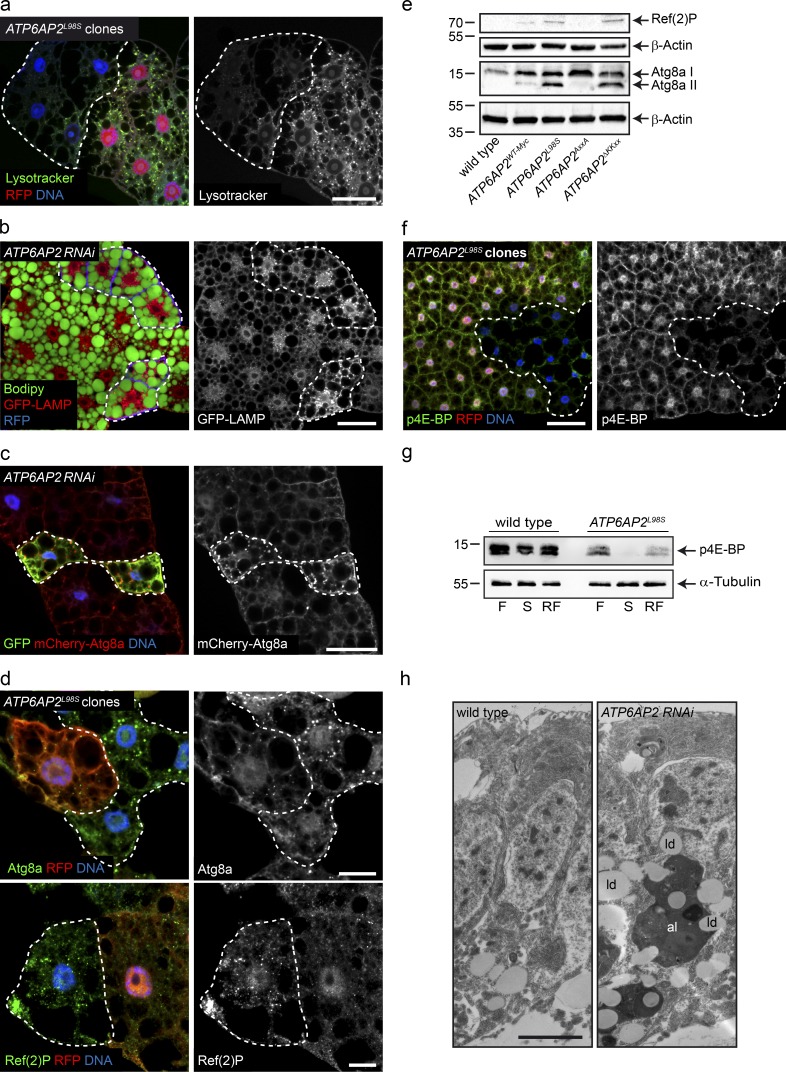Figure 9.
ATP6AP2 knockdown and ATP6AP2L98S mutation lead to lipid accumulation as a result of autophagic defects. (a) Lysotracker labeling (green in merged panel) of ATP6AP2L98S clonal populations (RFP-negative) of fat body cells surrounded by ATP6AP2WT-Myc cells (RFP-positive). Bar, 50 µm. (b) GFP-LAMP accumulation (red in merged panel) and increased lipid droplet size in ATP6AP2 knockdown cells (RFP-positive, blue in merged panel). Lipid droplets stained with Bodipy (green in merged panel). Bar, 50 µm. (c) Atg8a-mCherry accumulation (red in merged panel) in ATP6AP2 knockdown cells (GFP-positive, green in merged panel). Bar, 50 µm. (d) Endogenous Atg8a (upper) and Ref(2)P (lower) staining (green in merged panel) in ATP6AP2L98S clonal populations (RFP-negative) of fat body cells surrounded by ATP6AP2WT-Myc cells (RFP-positive). Bars, 20 µm. (e) Western blot of Ref(2)P and Atg8a in whole larvae extracts of WT and ATP6AP2WT-Myc, ATP6AP2L98S, ATP6AP2AxxA, and ATP6AP2ΔKKxx flies. β-Actin is used as loading control. Blot is representative of five independent experiments (five animals per genotype per experiment). (f) p-4E-BP staining of ATP6AP2L98S clonal populations (RFP-negative) of fat body cells surrounded by ATP6AP2WT-Myc cells (RFP-positive). Bar, 50 µm. (g) Western blot of p4E-BP in fat body extracts of WT and ATP6AP2L98S third instar larvae in fed (F), starved (S), and refed (RF) conditions. α-Tubulin is used as loading control. Blot is representative of four independent experiments (20–25 animals per genotype per experiment). (h) EM micrographs of pupal wings in which ATP6AP2 has been down-regulated in the dorsal compartment using RNAi driven by apterous-Gal4. As opposed to WT cells from the ventral epithelium (left), knockdown cells (right) show accumulation of lipid droplets (ld) and other organelles in large autolysosomes (al). Bar, 200 nm. Micrographs of clonal analyses are representative of at least three independent experiments (10–15 animals per genotype per experiment). Molecular mass is indicated in kilodaltons.

